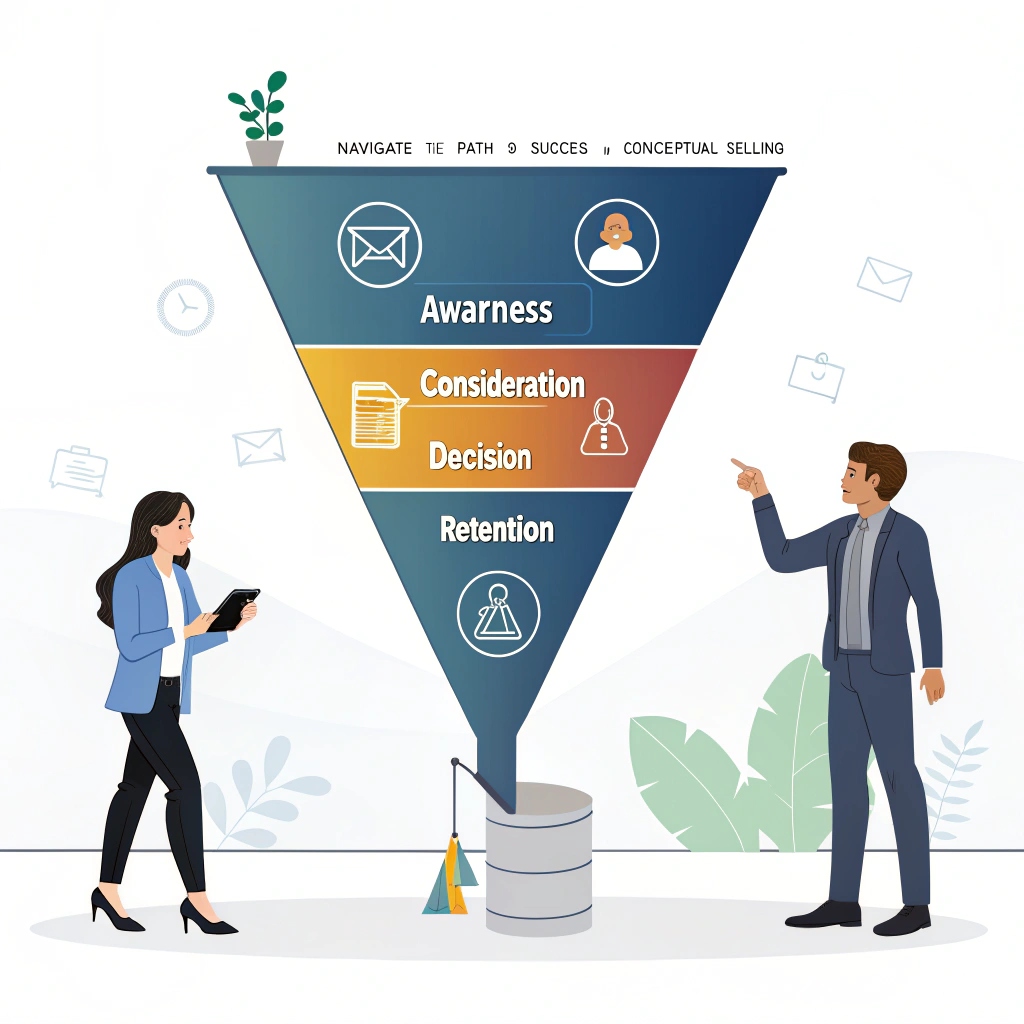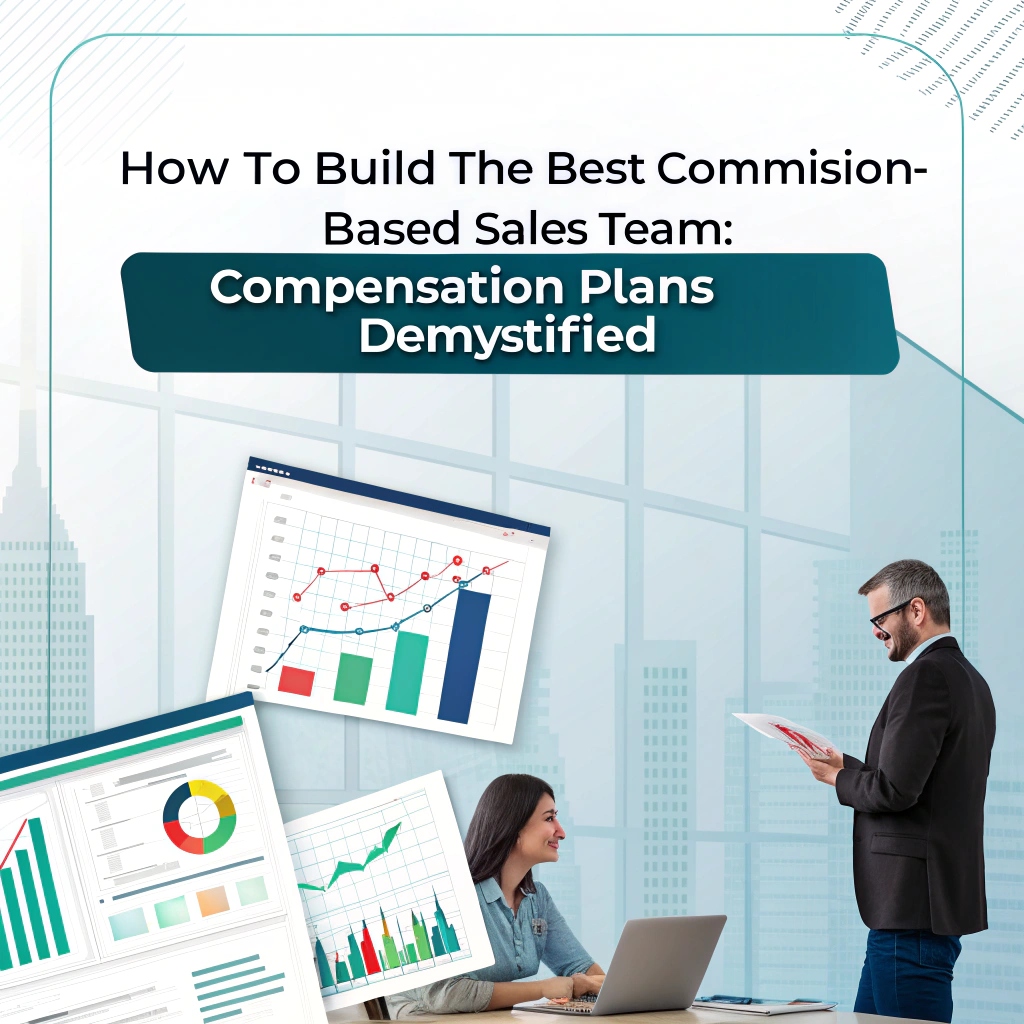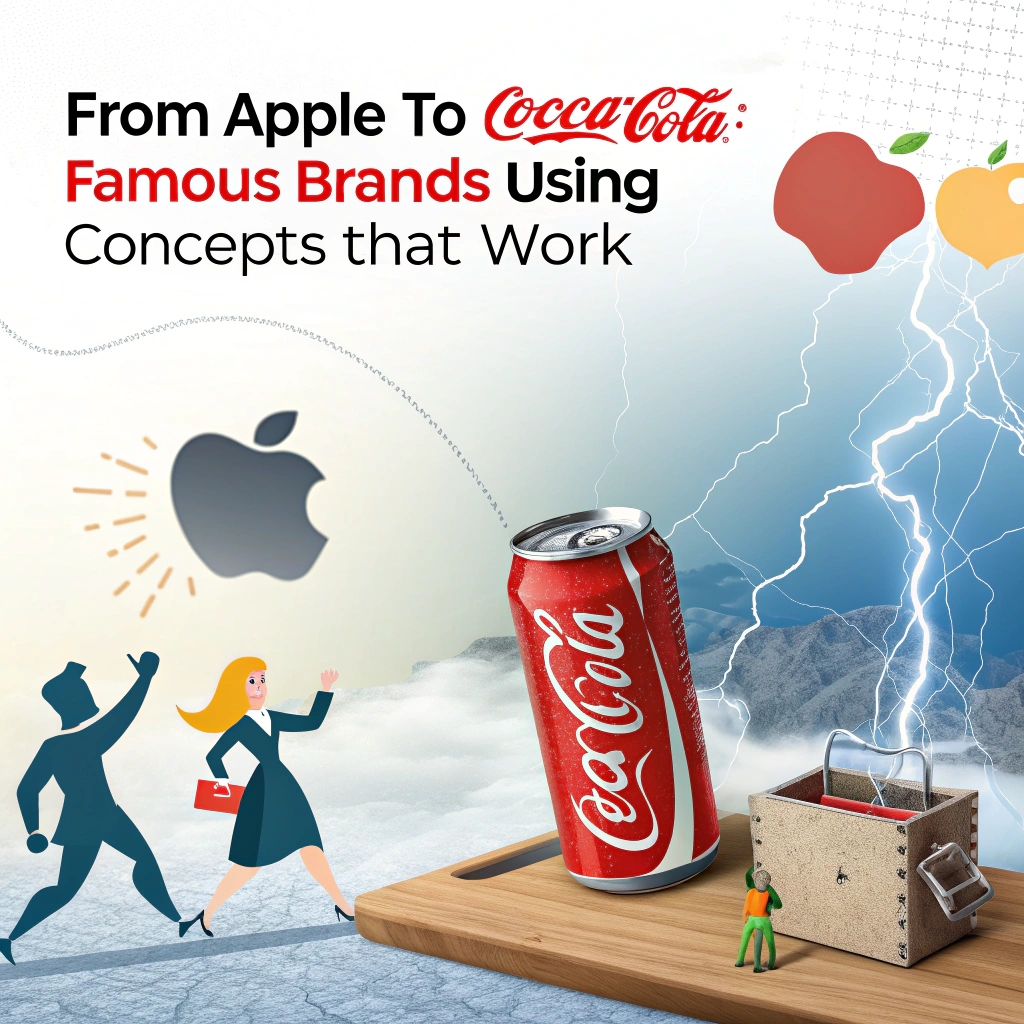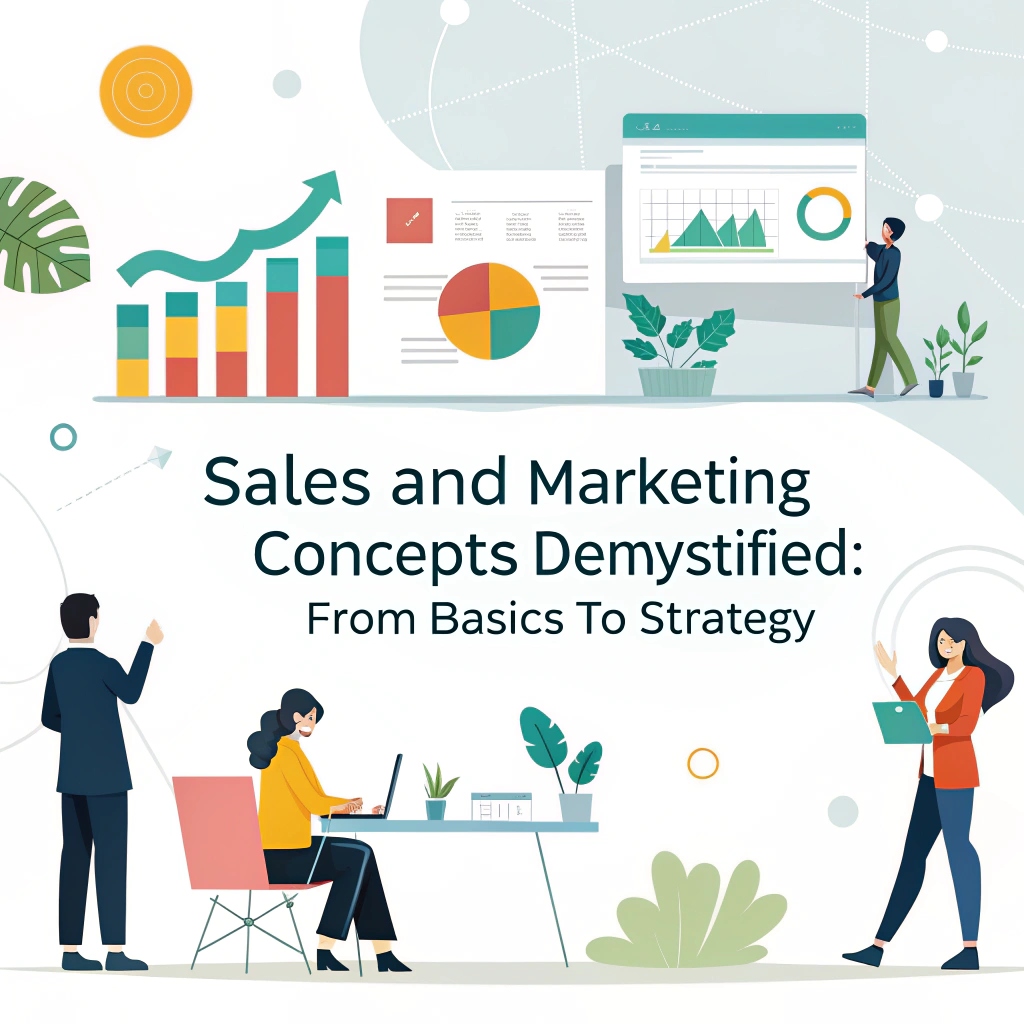
Introduction: From Funnels to Foundations
In today’s dynamic and hyper-aware market, traditional sales techniques are quickly losing ground. Clients no longer want to be “sold to”—they want to understand the why behind what you offer. Enter: Conceptual Selling, a proven approach that reshapes how modern sales teams engage leads, nurture them, and ultimately close deals. Whether you’re managing a SaaS pipeline, a life insurance agency, or enterprise software sales, transitioning from a linear sales funnel to a consultative, concept-driven approach can supercharge your results.

In this in-depth guide, we’ll explore:
- The evolution of the traditional sales funnel
- What is conceptual selling and how it works
- Step-by-step roadmap to transition from funnel to concept
- Real-life sales examples
- Tools to implement at every stage
- How to attract high-quality leads using concept-based selling
Section 1: Understanding the Traditional Sales Funnel
The classic sales funnel breaks down the customer journey into distinct stages:
- Awareness
- Interest
- Consideration
- Intent
- Evaluation
- Purchase
While this model has helped sales teams structure campaigns, it assumes that buyers move linearly through a fixed path—something that’s becoming increasingly rare in real-world B2B and B2C environments. Modern challenges with this model include:
- Buyers now conduct 70% of their research before talking to a rep.
- They bounce between stages, revisit evaluations, and compare countless options.
- There is more noise and less trust than ever.
That’s why conceptual selling—which focuses on understanding client concerns, perceptions, and outcomes—has become vital.
Section 2: What Is Conceptual Selling?
Coined by Robert B. Miller and Stephen E. Heiman, Conceptual Selling emphasizes selling the idea, not the product. At its core, conceptual selling believes:
“People don’t buy products; they buy the concept of what the product will do for them.”
Rather than pitching features, this method:
- Asks deep discovery questions
- Surfaces personal and business needs
- Aligns the product with a clear outcome
- Encourages collaborative decision-making
Section 3: Transitioning from Sales Funnel to Conceptual Selling

Here’s how your sales team can make the shift:
1. Reframe Your Funnel into a “Sales Conversation Path”
Instead of rigid stages, think of selling as a journey of co-discovery.
| Traditional Funnel | Conceptual Selling Shift |
|---|---|
| Awareness | Situation Questions |
| Interest | Problem & Goal Alignment |
| Consideration | Conceptual Matching |
| Decision | Joint Planning |
| Purchase | Long-term Value Framing |
2. Train Reps to Ask, Not Tell
The strength of conceptual selling lies in quality questions, not polished pitches. Use:
- Situation Questions – What’s your current process for XYZ?
- Problem Questions – Where do you face bottlenecks or risk?
- Implication Questions – What happens if this continues?
- Need-Payoff Questions – What would ideal success look like?
This is the SPIN Selling model in action, closely aligned with conceptual selling.
Section 4: Real-Life Example: SaaS Sales Team Transformation
Company: A B2B SaaS firm selling team collaboration software Old Funnel: Cold email → Demo → Objection handling → Pricing call Results: 18% demo-to-close ratio New Conceptual Selling Model:
- Discovery Call: Asked about remote team struggles post-COVID
- Mapped Problems: Delayed feedback, disjointed updates
- Introduced Concept: “Unified workspace with transparent, trackable feedback”
- Result: 33% increase in conversion and 45% increase in deal size
Instead of pushing the tool, they sold the idea of working as one team, one platform.
Section 5: How to Implement Conceptual Selling at Each Funnel Stage

Stage 1: Lead Generation (Awareness)
Concept Selling Strategy: Focus on educating the audience about common problems and the bigger picture outcome your product can provide. Tactics:
- Publish blogs like: “Why Traditional CRMs Are Killing Your Productivity”
- Host webinars focused on concepts: “The Death of Siloed Communication in Modern Teams”
Tools:
- LinkedIn Ads for B2B conceptual outreach
- ContentStudio, HubSpot Blog, or Canva Infographics for idea-based awareness content
Stage 2: Discovery and Qualification (Interest/Consideration)
Concept Selling Strategy: Uncover the client’s challenges, perspectives, and expectations. Tactics:
- Ask: “What’s your current vision for [X]?”
- Use a guided Value Mapping Sheet to identify conceptual alignment
Tools:
- Notion or Trello to visually organize prospects’ goals
- Chorus.ai or Gong.io to analyze question quality in calls
Stage 3: Pitch (Intent/Evaluation)
Concept Selling Strategy: Showcase how your solution aligns with the client’s concept, not your product features. Tactics:
- Personalized slides: “Here’s how we help companies like you overcome XYZ”
- Interactive demos showing vision, not just function
Tools:
- Prezi, Pitch, or Storydoc to create concept-driven pitch decks
- Use Loom videos for asynchronous, visual concept walkthroughs
Stage 4: Close (Purchase)
Concept Selling Strategy: Help the client visualize success after buying—not just the transaction. Tactics:
- Offer 1- or 3-year roadmaps
- Jointly define “success metrics” for accountability
Tools:
- PandaDoc or DocSend to create transparent, measurable proposals
- Typeform or Google Forms for post-pitch alignment surveys
Section 6: Benefits of Conceptual Selling Over Traditional Sales Funnel
| Benefit | Funnel-Based Sales | Conceptual Selling |
|---|---|---|
| Client Engagement | Low (info dump) | High (co-creation) |
| Deal Size | Average | Larger (based on vision) |
| Objection Handling | Reactive | Proactive (handled during discovery) |
| Client Retention | Product satisfaction | Vision fulfillment |
| Competitive Differentiation | Price-based | Insight-based |
Section 7: Attracting More Clients Using Conceptual Selling

1. Create Thought Leadership Content
Position your sales leaders and consultants as problem solvers, not product pushers. Publish content around:
- Industry shifts
- Client success stories
- Strategic trends
Example Blog Title: “From Tasks to Outcomes: Why Project Management Needs a New Narrative”
2. Run “Idea-First” Campaigns
Instead of “Buy Now” ads, use:
- Quizzes: “Is Your Team Aligned With Modern Work Models?”
- PDF Guides: “5 Concepts That Are Driving SaaS Growth in 2025”
3. Promote via Email Funnels
Create multi-stage, story-driven sequences:
- Email 1: Introduce a concept (e.g., “Quiet Chaos: The Hidden Cost of Tool Overload”)
- Email 2: Share a relatable client story
- Email 3: Invite to a discovery session
Section 8: Common Mistakes to Avoid

- Mistake 1: Using conceptual selling as a script, not a mindset
- Mistake 2: Failing to link the client’s concept to your product’s impact
- Mistake 3: Rushing to pitch before understanding the emotional triggers
- Mistake 4: Selling a general concept instead of a personalized one
Section 9: Best Tools to Support a Conceptual Sales Model
| Tool Type | Recommended Tools | Use |
|---|---|---|
| CRM | HubSpot, Salesforce | Track buyer journey + notes on conceptual preferences |
| Pitching | Storydoc, Prezi, Pitch | Create dynamic visual decks |
| Communication | Loom, Gong, Zoom | Record insights, pitch with video |
| Analytics | Gong.io, Clari | Analyze call tone and buying intent |
| Content | Canva, Medium, LinkedIn Creator Tools | Position brand with conceptual value |
Section 10: Final Thoughts — Conceptual Selling is the Future of Sales
Your product may be excellent—but in 2025 and beyond, it’s not the product that wins. It’s the perspective. Conceptual selling shifts the sales conversation from “what you’re buying” to “why it matters.” It’s about emotion, vision, value, and most importantly—alignment.

For modern sales teams, the future is clear:
- Reframe the funnel.
- Lead with insight.
- Close with alignment.
- Win with value.
“Don’t guide your clients through a funnel. Lead them through a future they believe in.” — Kundan Ranjan Tiwary, Sales LiftUp







